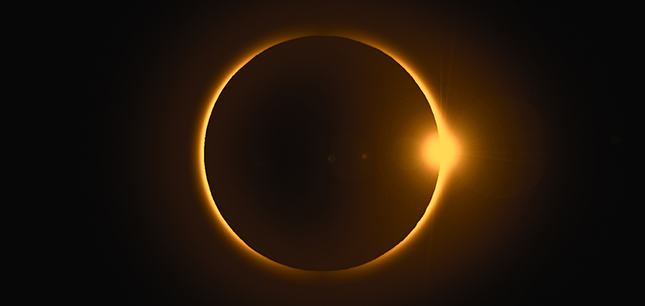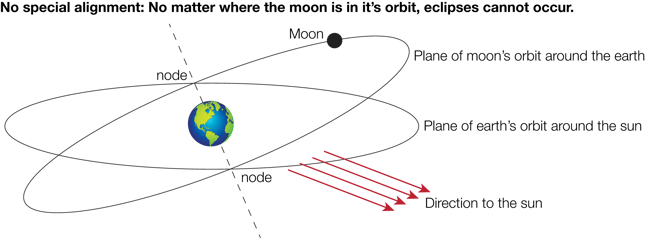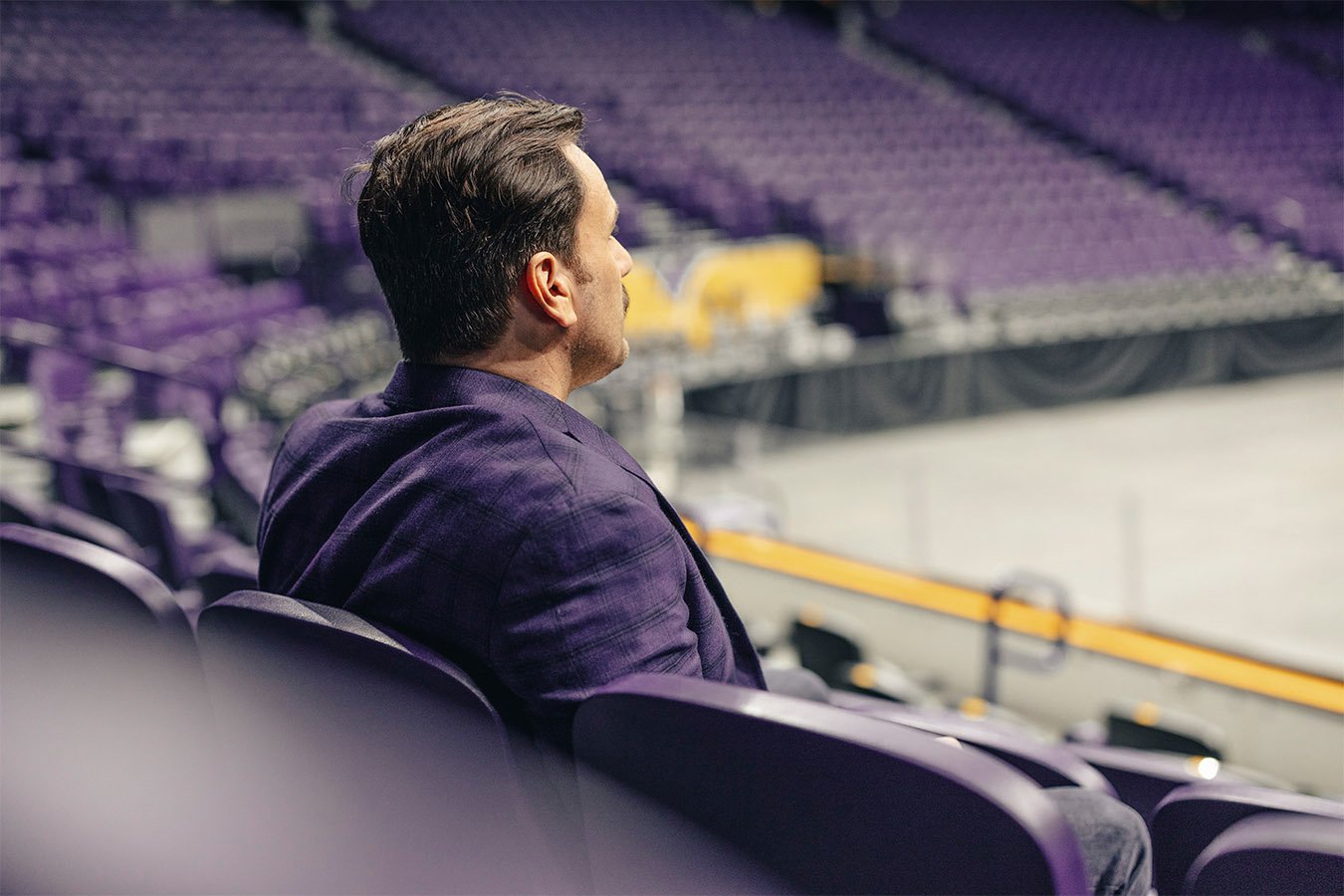The science of a solar eclipse


A solar eclipse happens when the sun, moon, and earth all line up, with the moon in the middle blocking some or all of the sun’s light from reaching certain places on earth. Essentially, wherever the moon’s shadow falls on earth, that location will experience a total eclipse. Two special astronomical conditions must be met for a total eclipse to occur.
First, all three objects—sun, moon, and earth—must be perfectly aligned. Since the moon’s orbital plane is tilted 5 degrees from the earth’s orbital plane, alignment can only happen when the moon is at one of two “nodes,” locations where the two orbital planes intersect. Think of holding two hula hoops on top of each other, one slightly smaller than the other, and then tilting the smaller one a few degrees about its center while keeping the other perfectly horizontal. Even though the hoops are not aligned, there are two places where they intersect—the nodes! When the nodes of the moon’s orbit fall along the line connecting the sun and earth, then a solar eclipse is possible. BUT, the moon must be in just the right location, or “phase,” in its orbit during the nodal alignment. If the lunar phase happens to be a “new moon,” then the moon will be located at the sunward node in its orbit, and a solar eclipse can occur.


Even if everything is perfectly aligned, a second condition must be met to insure a total solar eclipse. The moon must appear large enough in the sky to block out the sun. The distance from the earth to the moon varies somewhat as the moon makes its orbit around the earth each month. This means that its apparent size in the sky changes as well. Though not very noticeable, this change in size is very important for eclipses because the angular size of the moon ranges from slightly smaller to slightly larger than the sun’s apparent size in the sky. If the moon appears smaller, it cannot fully eclipse the sun no matter how well they line up in the sky. Instead, an “annular eclipse” can occur where, the moon blocks the center of the sun but leaves a bright ring of sunlight that prevents a dramatic darkening in the sky from ever happening.
A total solar eclipse, however, is a truly astonishing event for the small path on which the moon’s shadow falls. As the moon orbits, its shadow can move across the surface of the earth at well over a thousand miles per hour! This gives eclipse viewers a pretty short window (usually a few minutes at most) for totality, the time when the sun is completely obscured by the moon. Being in the window of totality is an incredible experience, especially for those who are fortunate enough to have clear skies. Viewers will feel like it is quickly turning from day to night, and back to day again, all within a matter of minutes.
No wonder many ancient viewers found them terrifying!
SolarFest: Eclipse picnic at Trevecca
When the sky goes dark over Nashville on August 21, Trevecca will mark this scientifically historic event with a family-friendly picnic, including food trucks and free ice cream. We'll have experts on hand to answer questions and display real-time data and images from Trevecca’s solar radio telescope and solar telescopes. Join us between 11:30 a.m. and 3 p.m.! The first 800 guests will receive free viewing glasses.



